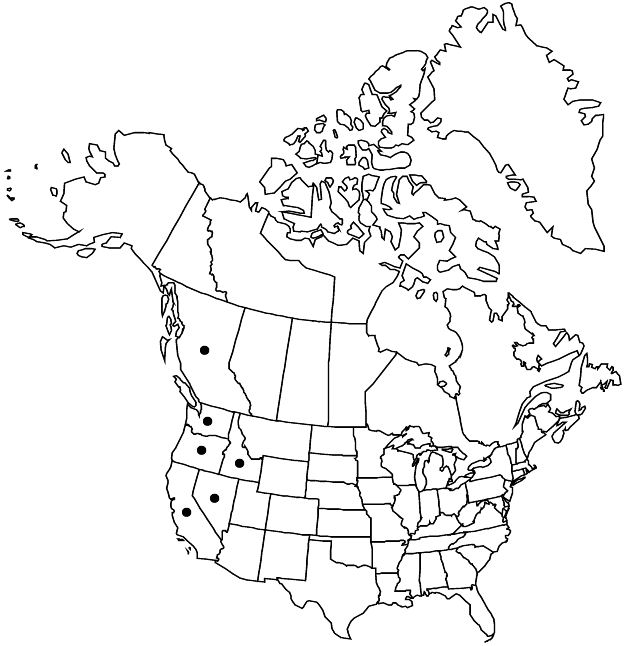Parnassia cirrata
Erythea 7: 128. 1899.
Herbs with caudices. Stems 15–40 cm. Leaves: basal in rosettes; petiole 1–12 cm; blade (of larger leaves) ovate-orbiculate to elliptic-ovate, 15–60 × 7–50 mm, base cuneate, rounded, or weakly cordate, apex rounded; cauline usually on middle to distal 1/2 of stem, rarely absent. Flowers: sepals reflexed in fruit, elliptic or oblong-lanceolate to ovate, 4–7 mm, margins sometimes scarious, to 0.1 mm wide, usually entire, rarely minutely denticulate distally, apex rounded; petals 5–7-veined, oblanceolate to obovate or elliptic, 8–15 × 3.3–9.8 mm, length 2 times sepals, base cuneate, margins fimbriate proximally; stamens 6–9 mm; anthers 1.5–2.2 mm; staminodes scalelike proximally, distally divided into 5–15 gland-tipped filaments, 3.5–6 mm, shorter than stamens, apical glands globose, 0.2–0.4 mm; ovary green. Capsules 10 mm.
Distribution

B.C., Calif., Idaho, Nev., Oreg., Wash., nw Mexico
Discussion
Varieties 2 (2 in the flora).
Selected References
None.
Key
| 1 | Larger petals 3.3–5.2(–7) mm wide, longer fimbriae (3.3–)3.5–6.5 mm; s California. | Parnassia cirrata var. cirrata |
| 1 | Larger petals (4–)5–10 mm wide, longer fimbriae 1–3(–3.5) mm; British Columbia, n California, Idaho, Nevada, Oregon, Washington. | Parnassia cirrata var. intermedia |